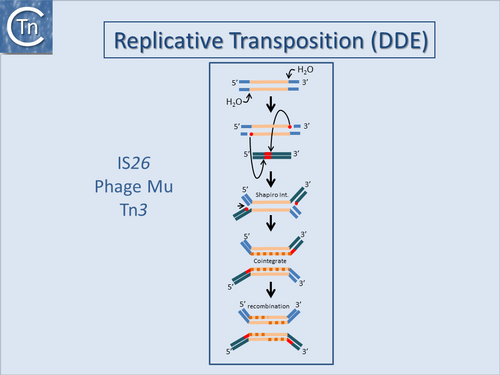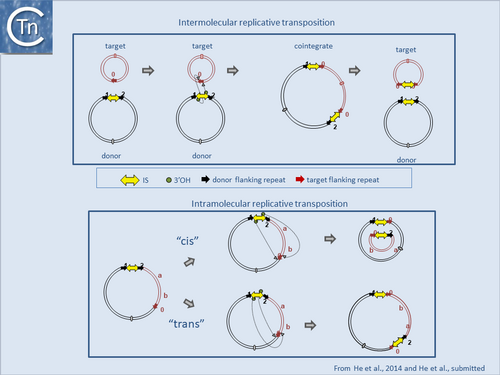General Information/Influence of transposition mechanisms on genome impact
The way in which strand cleavages and transfers occur during transposition also affects the outcome of the transposition events and therefore impinges on genome structure. For IS with DDE Tpases, Tn3 and IS6 family members generate fusions or cointegrates between the donor and target replicons by a process of replicative transposition, presumably by Target Primed Replicative Transposition (TPRT)[1][2][3] (Fig.1.23.1 and Fig.1.23.2 top). However, in the event of intramolecular transposition, this type of mechanism is expected to give rise to inversions with a copy of the IS at each junction or inversions with a single IS copy remaining and a second copy segregating with a circularized deletion[4] (Fig.1.23.2 botton; see [5]). Note that similar effects are also known to occur by homologous recombination between two inverted or directly repeated IS copies in a replicon. Other known mechanisms such as cut-and-paste, or copy-and-paste (Donor Primed Replicatice Transposition; DPRT)[6] would not generate this type of genomic rearrangement but could contribute to genomic modifications in other ways such as “nearly precise excision”[7] or by using alternative sequences which resemble their IR[8][9].

